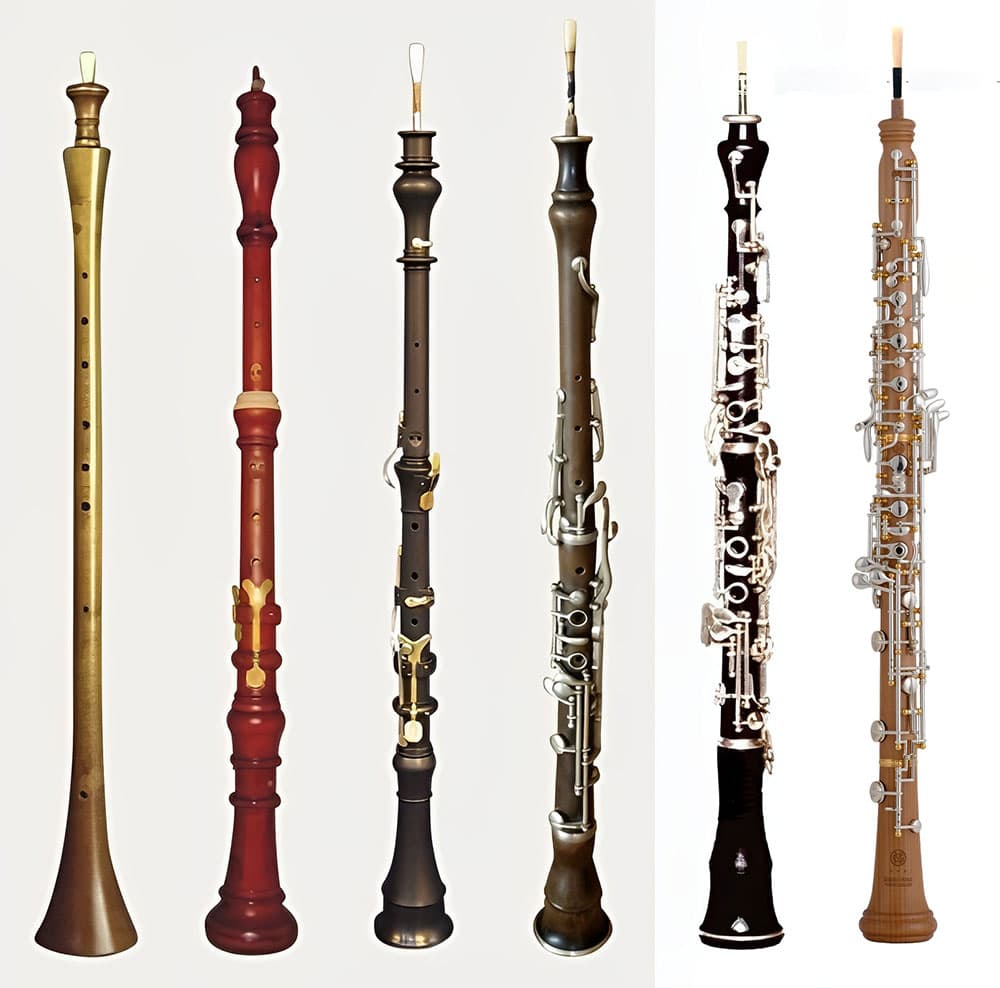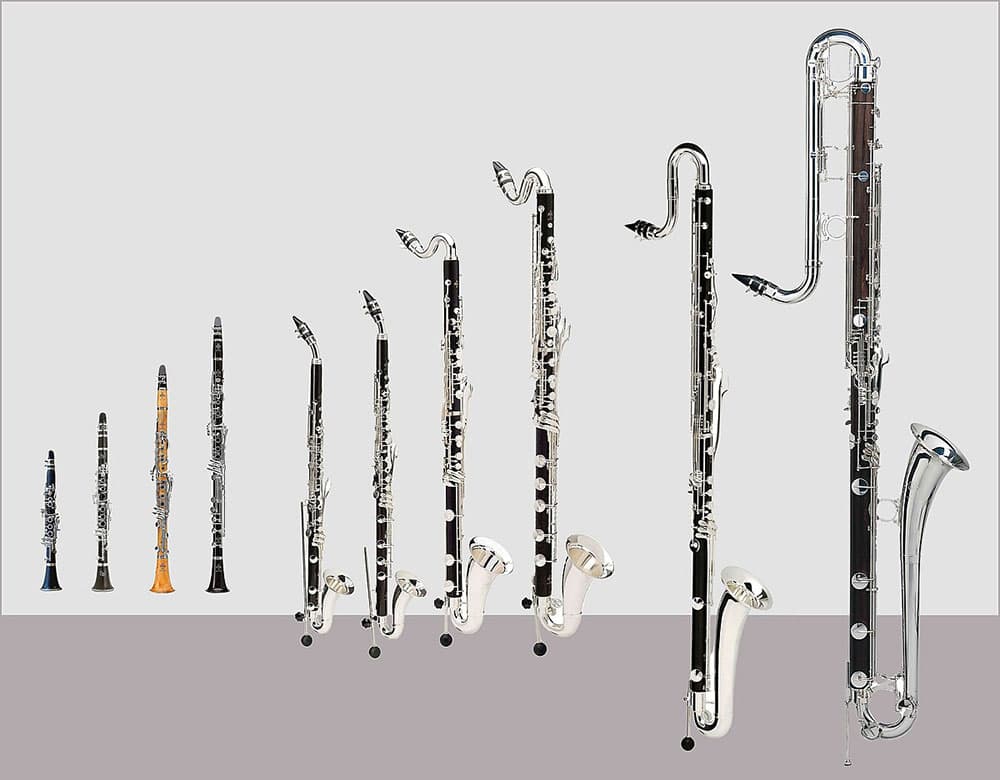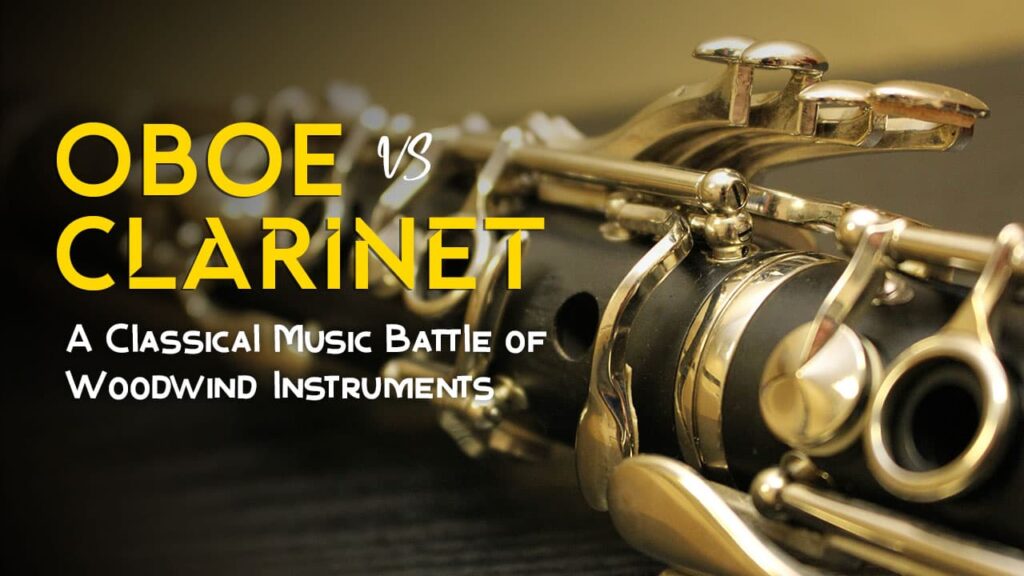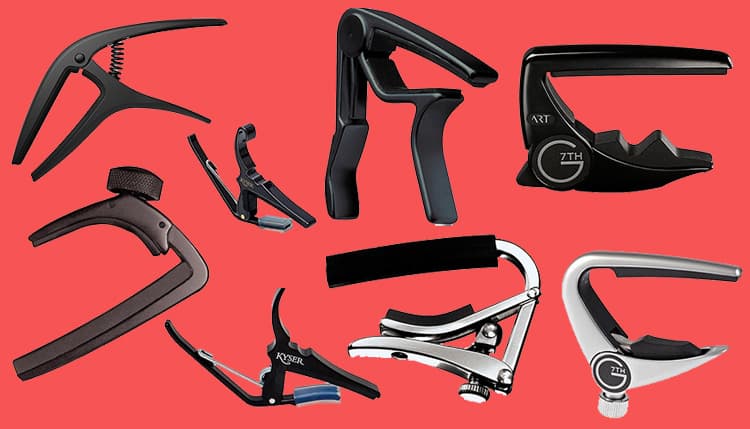When it comes to the world of woodwind instruments, the oboe vs clarinet is a battle worth discussing.
From orchestral performances to jazz ensembles, these two reed instruments have long been celebrated for their unique timbres, expressive capabilities and they stand out as two distinct yet equally captivating musical voices.
In this comprehensive article, we’ll delve into the similarities and differences between the oboe vs clarinet, exploring their histories, construction, playing techniques, and the roles they play in various musical genres.
History of the Oboe vs Clarinet
The oboe traces its roots back to the 17th century, when it emerged as a descendant of the shawm, a double-reed instrument played during the Renaissance.
With its distinctively piercing and penetrating sound, the oboe quickly became an essential voice in the Baroque period, lending its tone to the works of classical music composers like Bach and Handel.
The clarinet, on the other hand, came into prominence in the 18th century, evolving from the chalumeau, a single-reed instrument with a cylindrical bore.
Its mellow and versatile sound captivated composers, and it soon found a place in orchestras, chamber ensembles, and military bands.
Oboe vs Clarinet Characteristics
The clarinet and oboe may share a common ancestry as woodwind instruments, but their construction and tonal characteristics are quite different.
The oboe is a double-reed instrument, with a thin metal staple holding two thin reeds together.
As the player blows into the instrument, the reeds vibrate, and the oboe produces a distinctive and penetrating tone that can be both warm and nasal in quality.
Whereas the clarinet is a single-reed instrument, with a single reed attached to a mouthpiece that vibrates against a flat surface called the lay.
This produces a rich, mellow tone that can range from velvety smooth to bright and piercing, depending on the player’s embouchure and the instrument’s register.

Oboe vs Clarinet Playing Techniques
The playing techniques for the oboe vs clarinet differ significantly due to their distinct construction.
Oboe players must maintain a steady stream of air and precise embouchure to keep the double reeds vibrating consistently, which requires considerable skill and practice.
Clarinet players, on the other hand, have a more straightforward fingering system and can rely on the single reed’s stability to produce a wider range of tonal colors and articulations.
In orchestral and chamber music, the oboe is mainly used as a voice of authority, providing melodic lines and harmonic support with its focused and penetrating tone.
The clarinet, with its versatile sound, can blend seamlessly with strings and other instruments of the woodwind family, while also taking on soloistic roles and adding color to harmonies.
In jazz and popular music, the clarinet found its niche in early New Orleans style and swing bands, with iconic players like Benny Goodman and Artie Shaw showcasing its expressive potential.
The oboe, while less common in these genres, has made notable appearances in the works of composers like Gershwin and Duke Ellington, adding a touch of classical elegance to their compositions.

Famous Musicians: Oboe vs Clarinet Masters
Throughout the rich history of music, both the oboe and clarinet have been graced by numerous talented musicians who have mastered and pushed the boundaries of these instruments and left an indelible mark on the musical world.
Oboe Virtuosos
The oboe has been the instrument of choice for many exceptional musicians, each bringing their unique artistry and technical mastery to the fore.
Albrecht Mayer: Widely regarded as one of the finest oboists of our time, Mayer has captivated audiences worldwide with his virtuosic performances and silky smooth tone. His interpretations of Mozart’s oboe concertos are particularly renowned.
Heinz Holliger: A Swiss oboist, composer, and conductor, Holliger is celebrated for his innovative approach to the instrument. He has expanded the oboe’s repertoire with his own compositions and has been praised for his expressive playing and ability to bring out the lyrical qualities of the oboe.
Alex Klein: A renowned American oboist, Klein has held principal positions with some of the world’s most prestigious orchestras, including the Chicago Symphony Orchestra and the Boston Symphony Orchestra. His recordings and recitals have showcased his technical brilliance and musical sensitivity.
Clarinet Legends
The clarinet has also produced its fair share of musical giants, with many players leaving an indelible mark on the instrument’s history.
Benny Goodman: Known as the “King of Swing,” Goodman was a pioneering jazz clarinetist who helped popularize the instrument in the big band era. His virtuosic playing and charismatic stage presence made him a household name and paved the way for future generations of jazz clarinetists.
Artie Shaw: Another iconic figure in the world of swing and jazz, Shaw was renowned for his technical prowess and his ability to infuse the clarinet with a lyrical and expressive quality. His recordings and live performances cemented his reputation as one of the greatest clarinetists of all time.
Richard Stoltzman: A contemporary virtuoso, Stoltzman has been credited with expanding the repertoire and popularity of the clarinet. His versatile playing spans classical, jazz, and even world music genres, and he has collaborated with a wide range of artists, including jazz legend Chick Corea and composer John Adams.
Inspiring Generations
These legendary musicians, and many others, have left an indelible mark on the oboe and clarinet, inspiring generations of aspiring players and pushing the boundaries of what these instruments can achieve. Their artistry, dedication, and passion continue to resonate, serving as a testament to the enduring beauty and versatility of these woodwind instruments.
Ease of Learning: Oboe vs. Clarinet
When it comes to the ease of learning and mastering these two woodwind instruments, the oboe vs clarinet present different levels of challenge for beginners.
Play The Oboe: A Demanding Craft
The oboe is widely regarded as one of the most challenging instruments to learn, particularly for beginners. This is primarily due to the complexity of controlling the double reeds and maintaining a consistent embouchure (the positioning of the lips and facial muscles) while playing.
The oboe’s double reeds require a precise and steady stream of air to vibrate correctly, and even the slightest variation in the embouchure or air pressure can result in a wavering pitch or tone quality. Learning to play the oboe and produce a clear and stable sound on the oboe can take years of dedicated practice and guidance from an experienced teacher.
Moreover, the oboe’s finger positioning and key work are intricate, adding another layer of complexity for students to master. The instrument’s narrow conical bore and small finger holes also make it challenging to cover all the holes completely, which can lead to air leaks and further intonation issues.
Play The Clarinet: A More Accessible Option
In contrast, the clarinet is generally considered more accessible and easier to learn for beginners. With its single reed and simpler fingering system, the clarinet presents fewer obstacles for those just starting their musical journey.
The clarinet’s single reed is more stable and less sensitive to minor variations in embouchure or air pressure, making it easier to produce a consistent tone. Additionally, the instrument’s larger finger tone holes and straightforward key work make it less prone to air leaks and intonation problems.
While developing proper embouchure and breath support is still essential for playing the clarinet well, the learning curve is not as steep as it is for the oboe. With regular practice and guidance from a teacher, beginners can often make steady progress and start producing pleasant sounds on the clarinet within a few months.
Choosing the Right Woodwind Instrument
When deciding which musical instrument to learn, it’s crucial to consider one’s interests, goals, and commitment level. The oboe’s demanding nature may deter some beginners, while the clarinet’s relative accessibility could make it a more appealing choice for those looking to experience the joys of music-making more quickly.
Ultimately, both instruments require dedication, patience, and a willingness to overcome challenges. With the right guidance, practice, and passion, students can excel on either the oboe or the clarinet, unlocking the unique expressive potential of each instrument.
Oboe vs Clarinet FAQs
Q: Which instrument is more difficult to learn, the oboe or the clarinet?
A: The oboe is generally considered more challenging to learn and master due to the complexity of controlling the double reeds and maintaining a consistent embouchure. The clarinet has a single reed and simpler fingering system make it more accessible for beginners.
Q: Can you play the same music on the oboe and the clarinet?
A: While the oboe and clarinet share the same basic range, their distinct tonal characteristics and playing techniques make it challenging to play the same music interchangeably. Compositions are typically tailored to the unique qualities of each instrument.
Q: Which instrument is more common in orchestras?
A: The clarinet has a more prominent presence in orchestras, with multiple clarinets often being used to provide support and color. The oboe, while essential, typically has a smaller role with one or two players providing melodic lines and harmonic support.
Q: Can an oboe and a clarinet play in harmony together?
A: Absolutely! While their tonal characteristics differ, the clarinet and oboe can blend beautifully when played together in harmony. Many composers have taken advantage of this interplay, creating beautiful duets and ensemble pieces that showcase the unique voices of these two instruments.
Oboe vs Clarinet Wrap Up
In the grand tapestry of woodwind instruments, the oboe vs clarinet each bring their own distinct tonal personalities and expressive capabilities with different tones.
While the oboe’s piercing and focused tone lends itself to melodic lines and harmonic support, the clarinet’s versatile and mellow sound allows it to blend seamlessly with other instruments while also taking on soloistic roles.
Whether in orchestral performances, chamber ensembles, or jazz bands, these two instruments continue to captivate audiences with their unique voices, showcasing the rich diversity of the woodwind family.
Image Credits:









